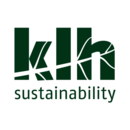Using BREEAM to assess the sustainable sourcing and use of aggregates
Contents |
[edit] Introduction
In October 2017, the draft of the eagerly anticipated BREEAM UK New Construction (NC) 2018 was launched for consultation. Whilst there are many changes that will hopefully continue to improve the way we promote and assess the sustainability of new developments, some of the most interesting relate to assessment issue WST 02 in the ‘Waste’ category.
The new WST 02 is entitled ‘Use of recycled and sustainably sourced aggregates’, branching out from the previous topic of simply ‘Recycled aggregates’. Over the last year, KLH Sustainability, on behalf of The Crown Estate conducted extensive research into the UK aggregate industry and consulted with key members about a revised methodology for assessing aggregate use in construction. Out of this work, a new criteria and assessment methodology were proposed to BRE for the WST 02 assessment issue. The proposed criteria have now been published in the draft 2018 manual.
[edit] Why does it matter and why change the credit?
Aggregates are low value, high bulk materials and are vital in nearly every construction project. KLH Sustainability have previously written about the availability of recycled and secondary aggregates, and the potential consequences of trying to drive recycled and secondary aggregates up the value chain. An alternative approach to the assessment of sustainable sourcing and use of aggregates has been introduced, highlighting how aggregates should be evaluated holistically.
[edit] New proposal for WST 02
The new methodology aims to recognise and minimise social and environmental impacts of aggregate selection, sourcing and use. Three key assessment criteria, deemed significant for the aggregate industry, are used:
- local availability of aggregates – this uses the regional Abiotic Depletion Potential (ADP) of the aggregate type depending on the region from which it is sourced (see an explanation of ADP here);
- social cost of transportation – a monetary value is determined based on the cost of externalities associated with freight transport, such as accidents, congestion, and noise. Different modes of transport and types of roads have different social costs;
- carbon footprint – carbon emissions are calculated based on the aggregate type and the CO2e emissions from the mode of transport selected and the travel distance.
The assessment is based on the points achieved per aggregate source, with points awarded in each of the three categories. Using the tonnes of aggregate per source, a final weighted average for the project is calculated, giving a project Sustainable Aggregate Points score.
There is an easy-to-use tool for use with the BREEAM credit that does most of the work for you.
[edit] Going forward
It is hoped that this new, broader method will encourage project teams to recognise the holistic impacts of aggregates and engage with the industry to identify and test alternative sources, as well as encourage the maximum reuse of aggregates obtained from site-won material. As noted in the draft BREEAM UK NC 2018 manual, this new methodology recognises that “primary aggregates can still be considered a sustainable option, where locally sourced, sustainably transported and from a region where that aggregate type is abundant.”
The formal BRE consultation closed on Friday 3rd November 2017.
[edit] Related articles on Designing Buildings Wiki
Featured articles and news
RTPI leader to become new CIOB Chief Executive Officer
Dr Victoria Hills MRTPI, FICE to take over after Caroline Gumble’s departure.
Social and affordable housing, a long term plan for delivery
The “Delivering a Decade of Renewal for Social and Affordable Housing” strategy sets out future path.
A change to adoptive architecture
Effects of global weather warming on architectural detailing, material choice and human interaction.
The proposed publicly owned and backed subsidiary of Homes England, to facilitate new homes.
How big is the problem and what can we do to mitigate the effects?
Overheating guidance and tools for building designers
A number of cool guides to help with the heat.
The UK's Modern Industrial Strategy: A 10 year plan
Previous consultation criticism, current key elements and general support with some persisting reservations.
Building Safety Regulator reforms
New roles, new staff and a new fast track service pave the way for a single construction regulator.
Architectural Technologist CPDs and Communications
CIAT CPD… and how you can do it!
Cooling centres and cool spaces
Managing extreme heat in cities by directing the public to places for heat stress relief and water sources.
Winter gardens: A brief history and warm variations
Extending the season with glass in different forms and terms.
Restoring Great Yarmouth's Winter Gardens
Transforming one of the least sustainable constructions imaginable.
Construction Skills Mission Board launch sector drive
Newly formed government and industry collaboration set strategy for recruiting an additional 100,000 construction workers a year.
New Architects Code comes into effect in September 2025
ARB Architects Code of Conduct and Practice available with ongoing consultation regarding guidance.
Welsh Skills Body (Medr) launches ambitious plan
The new skills body brings together funding and regulation of tertiary education and research for the devolved nation.
Paul Gandy FCIOB announced as next CIOB President
Former Tilbury Douglas CEO takes helm.
UK Infrastructure: A 10 Year Strategy. In brief with reactions
With the National Infrastructure and Service Transformation Authority (NISTA).























